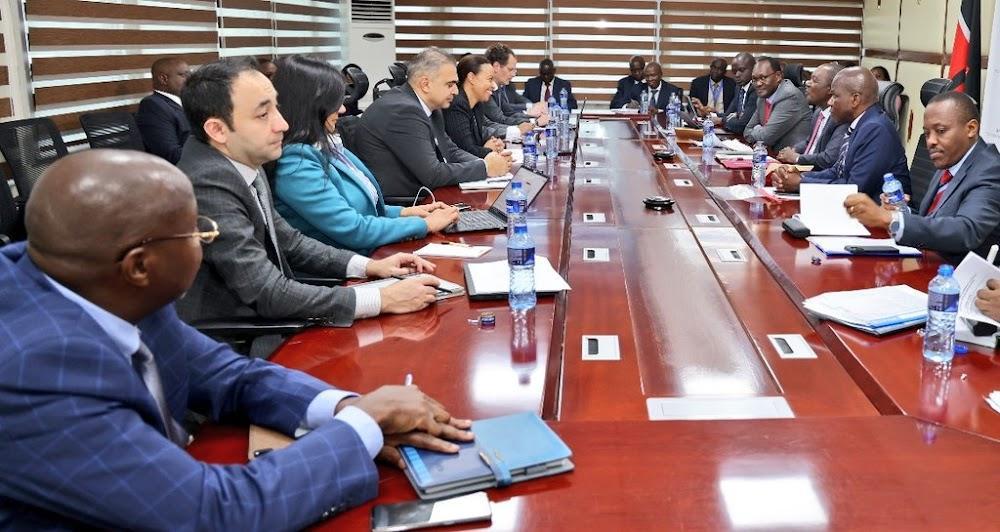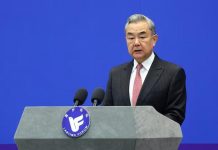Africa-Press – Kenya. Kenya’s economic prospects looks brighter, thanks to interventions by World Bank and International Monetary Fund that have played a huge role in easing volatilities witnessed less than three months ago.
Major economic indicators in the country show that confidence is slowly creeping back after the government secured the International Monetary Fund’s facility to pay back the Eurobond.
The repayments had triggered volatility in financial markets, including the stock market and bond market, as investors had become more cautious leading to fluctuations in asset prices.
However, in recent months, Kenya’s economic landscape has witnessed a notable upturn, marked by positive indicators across sectors.
These improvements have come as a welcome development for the policy makers, signalling a potential resurgence in the country’s economic growth trajectory.
In February, Kenya successfully issued a new Eurobond worth $1.5 billion (Sh195 billion) to buy back the inaugural one due on June 24.
The directive was meant to ease the cash flow crisis and boost Kenya’s dwindling foreign exchange reserves that had taken a hit from the weakening shilling.
Following the move, key indicators such as GDP growth, inflation rates, and foreign investment inflows have all displayed encouraging trends, bolstering confidence among investors and policymakers alike.
The roll over effect saw a decline in prices of food items, fuel and electricity in the month of March bringing down the level of inflation to 5.7 per cent, a record last marked in December 2021.
“Prices of maize flour loose, maize flour-sifted, sugar and fortified maize flour dropped by 9.6, 5.8, 5.3 and 5.1 per cent, respectively between February 2024 and March 2024,” Kenya National Bureau of Statistics (KNBS) said in its latest monthly review.
A spot-check across major retailers shows that in the two-month period, a two kilogramme pack of sifted maize flour dropped from highs of Sh200 to an average of Sh145.
Sugar prices which had also hit record highs dropped from Sh400 in February for a 2kg pack to Sh378 in March.
In the two month period, the cost of power for 50kWh of electricity has also recorded a Sh6 drop to Sh1,400.
The interventions by the multilateral lenders, has seen World Bank review its projections on Kenya’s economy to grow by five per cent this year, mainly driven by increased investment based on restored access to international capital markets.
This, it says, will spur investor confidence and capital inflows, as well as more credit to the private sector through reduced domestic government borrowing.
The National Treasury, however, puts the growth higher at 5.7 per cent this year, even as the country navigates through a high interest rates regime and major global risks.
Already, the strengthening shilling, as a result of the latest facility from the World Bank has seen foreign exchange reserves remain adequate, rebuffing importers concerns on dollar shortage.
The Nairobi Securities Exchange (NSE) has emerged from a deep bear run to increase trading activities by 70 per cent in just two months.
The Capital Markets Authority (CMA) is now optimistic that the bourse will hit an aggregate market capitalisation of Sh6.6 trillion in the next five years, if the current trend persists.
Last year, NSE recorded a 27.5 per cent drop in paper wealth worth Sh547 billion as the multi-year bear run hurt investors’ portfolios, largely on a weak shilling that had sunk to an all-time low of Sh165 units to the US dollar.
According to CBK, leading indicators point to the continued strong performance of the Kenyan economy in the first quarter of 2024, reflecting robust activity in the agriculture and service sectors, particularly accommodation and food services, and information and communication.
The global lenders have long held significant sway over developing nations’ economies.
In Kenya, their interventions have sparked both debate and transformation, influencing various sectors and shaping the nation’s economic trajectory.
Over the past year, Kenya has engaged with the World Bank and IMF through loans, policy advice, and technical assistance.
These collaborations have been aimed to address economic challenges, enhance infrastructure, promote fiscal discipline, and stimulate sustainable growth.
However, the impact of these interventions has been a topic of contention among experts and citizens alike.
One notable effect of World Bank and IMF interventions has been the infusion of capital into critical sectors.
Projects funded by these institutions have bolstered Kenya’s infrastructure, particularly in transportation and energy.
According to World Bank, Kenya currently accesses about $2 billion (Sh260 billion) in concessional financing each year.
Over the three fiscal years (2024-2026), World Bank’s International Development Association(IDA) and the International Bank for Reconstruction and Development (IBRD) expect to provide an estimated $4.5 billion (Sh585 billion) including fast-disbursing operations.
“Out of this amount, $3 billion (Sh390 billion) is estimated from IDA and $1.5 billion (Sh195 billion) from IBRD,” the lender said in a statement.
Moreover, IMF programmes have influenced fiscal policies, emphasising fiscal discipline, transparency, and governance reforms.
The IMF and the World Bank have been proposing that Kenya must prioritise reducing government expenditures and increasing tax revenues, to prevent a potential economic crisis caused by excessive debt.
These initiatives are aimed at improving Kenya’s macroeconomic stability, attract foreign investment, and strengthen public financial management.
For More News And Analysis About Kenya Follow Africa-Press






